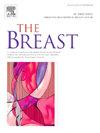Survival feature and trend of female breast cancer: A comprehensive review of survival analysis from cancer registration data
IF 7.9
2区 医学
Q1 OBSTETRICS & GYNECOLOGY
引用次数: 0
Abstract
To better understand global patterns, chronological changes, and international comparisons of female breast cancer survival, we reviewed published data from population-based cancer registries worldwide. Using PubMed, Embase, Web of Science, SEER, and SinoMed, a comprehensive literature search was conducted for female breast cancer survival from the population-based cancer registries through 31 December 2023. Observed, relative, and net survival rates and their corresponding age-standardized survival rates since the 1990s were collected and further stratified by prognostic factors. The prognosis of female breast cancer patients was favorable, with 5-year relative survival rates above 80 % in most regions. The trend in breast cancer survival showed annual increases in most countries but was accompanied by geographical disparities. The highest age-standardized 5-year relative survival rate was identified in the USA (2010–2014) at 90.2 %, while the lowest was in India (2010–2014) at 66.1 %. Overall, North America and Oceania had the best survival, and, for Europe, survival was worst in Eastern Europe. The survival in some Asian countries was disturbing. Younger age groups had a better prognosis than those aged 75 years and over. The lowest survival rates were observed in patients with distant metastatic and triple-negative breast cancer. Worldwide, there has been a steady improvement in female breast cancer survival. However, the survival gap between developed and developing countries has remained wide over the past 30 years. Differences in age, stage at diagnosis, and molecular subtype may explain some of the disparities, providing evidence for targeted management strategies.

女性乳腺癌的生存特征和趋势:来自癌症登记数据的生存分析的综合综述。
为了更好地了解女性乳腺癌生存的全球模式、时间变化和国际比较,我们回顾了全球基于人群的癌症登记处发表的数据。使用PubMed、Embase、Web of Science、SEER和SinoMed,对截至2023年12月31日基于人群的癌症登记处的女性乳腺癌生存率进行了全面的文献检索。收集自20世纪90年代以来的观察、相对和净生存率及其相应的年龄标准化生存率,并根据预后因素进一步分层。女性乳腺癌患者预后良好,多数地区5年相对生存率在80%以上。在大多数国家,乳腺癌生存率呈逐年上升趋势,但也存在地域差异。年龄标准化5年相对生存率最高的是美国(2010-2014),为90.2%,最低的是印度(2010-2014),为66.1%。总的来说,北美和大洋洲的存活率最高,而在欧洲,东欧的存活率最低。一些亚洲国家的生存状况令人不安。年龄较小的患者预后优于75岁及以上的患者。生存率最低的是远处转移性乳腺癌和三阴性乳腺癌。在世界范围内,女性乳腺癌患者的存活率稳步提高。然而,在过去30年里,发达国家和发展中国家之间的生存差距仍然很大。年龄、诊断阶段和分子亚型的差异可以解释一些差异,为有针对性的管理策略提供证据。
本文章由计算机程序翻译,如有差异,请以英文原文为准。
求助全文
约1分钟内获得全文
求助全文
来源期刊

Breast
医学-妇产科学
CiteScore
8.70
自引率
2.60%
发文量
165
审稿时长
59 days
期刊介绍:
The Breast is an international, multidisciplinary journal for researchers and clinicians, which focuses on translational and clinical research for the advancement of breast cancer prevention, diagnosis and treatment of all stages.
 求助内容:
求助内容: 应助结果提醒方式:
应助结果提醒方式:


